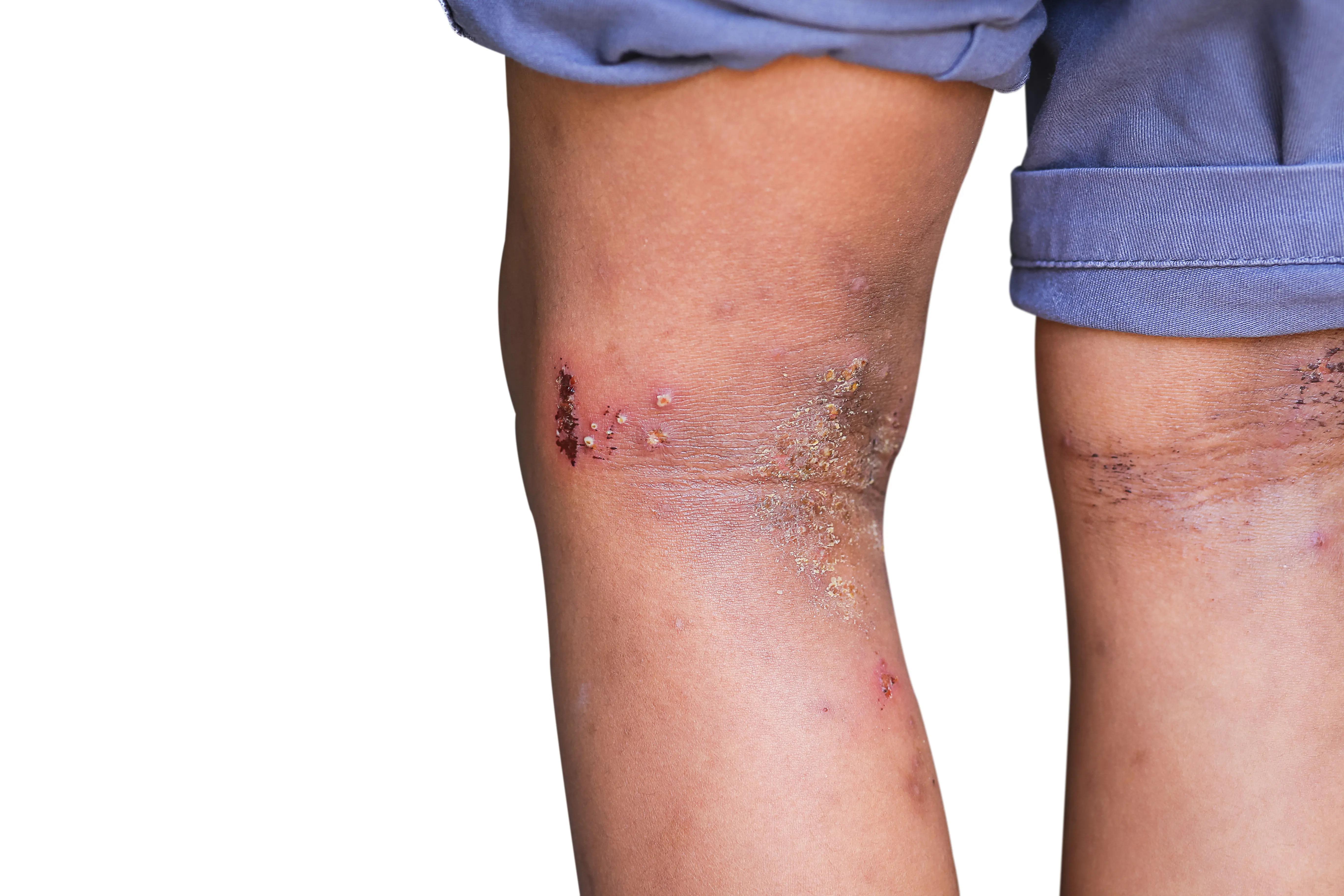- Case-Based Roundtable
- General Dermatology
- Eczema
- Chronic Hand Eczema
- Alopecia
- Aesthetics
- Vitiligo
- COVID-19
- Actinic Keratosis
- Precision Medicine and Biologics
- Rare Disease
- Wound Care
- Rosacea
- Psoriasis
- Psoriatic Arthritis
- Atopic Dermatitis
- Melasma
- NP and PA
- Skin Cancer
- Hidradenitis Suppurativa
- Drug Watch
- Pigmentary Disorders
- Acne
- Pediatric Dermatology
- Practice Management
- Prurigo Nodularis
- Buy-and-Bill
News
Article
Image IQ: Hand numbness, pain, skin tightness and raised scars
Author(s):
Image IQ: A man presents to his doctor with hand numbness, pain, skin tightness and raised scars. What’s your diagnosis?
Image IQ: A man presents to his doctor with hand numbness, pain, skin tightness and raised scars. What’s your diagnosis? (Photo courtesy of VisualDx 2018)

A 70-year-old man presented to his primary care physician with numbness and pain in his hand with difficulty opening his hand. His palm appeared to have raised scars and the skin looked tight. There were smooth nodules on his hand a couple of years ago. His thumb and index finger were unaffected. The patient was a long-time smoker and a recovering alcoholic.
What’s your diagnosis?
A. Dupuytren contracture
B. Rheumatoid arthritis
C. Carpal tunnel syndrome
D. Trigger finger
Visit the next page for the answer.
The correct answer is A: Dupuytren contracture
Dupuytren's contracture is a fibroproliferative condition involving the palmar aponeurosis. At present, the pathophysiology of the disorder is not entirely understood, although several factors are believed to contribute to fibroblastic proliferation and altered collagen profiles, including specific platelet-derived fibroblast growth and transforming growth factors. White men of Northern or Eastern European descent aged 60 years or older are most commonly affected.
Initial symptoms include thickened nodules or plaques (Grade 1), which are followed by fibrous band development (Grade 2). With progression and increased fibrosis, flexion contractures develop (Grade 3). Patients may also present with similar findings in the plantar fascia. Presentation can be unilateral or bilateral, with one hand typically being more severe than the other.
Risk factors include alcohol abuse, tobacco use, and certain family history; evidence supports an autosomal dominant pattern of inheritance. A 2011 study identified nine loci associated with genetic susceptibility to Dupuytren's contracture; six of the loci contain genes that encode proteins in the Wnt-signaling pathway, and the authors postulate that aberrations in this signaling pathway are related to the process of fibromatosis in the disease.
A small portion of patients with Dupuytren's contracture also develop Peyronie's disease.
Pediatric Patient Considerations: Rarely the condition can present in pediatric patients, though the clinician should be mindful of epithelioid sarcoma.
ICD 10 Code: M72.0 – Palmar fascial fibromatosis [Dupuytren]
For more information about this quiz â specifically, differential diagnoses and pitfalls, clinical tests, management pearls, therapy and a complete list of references â visit VisualDx online.






